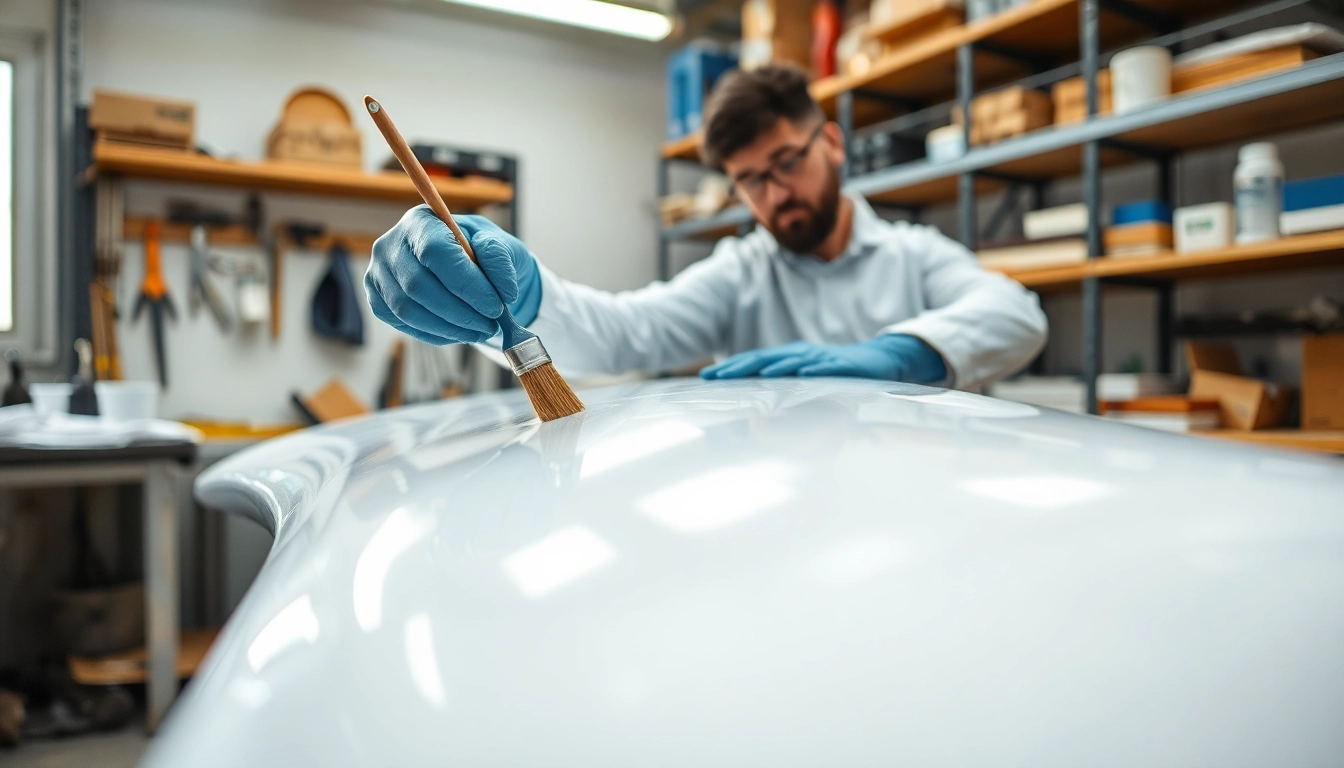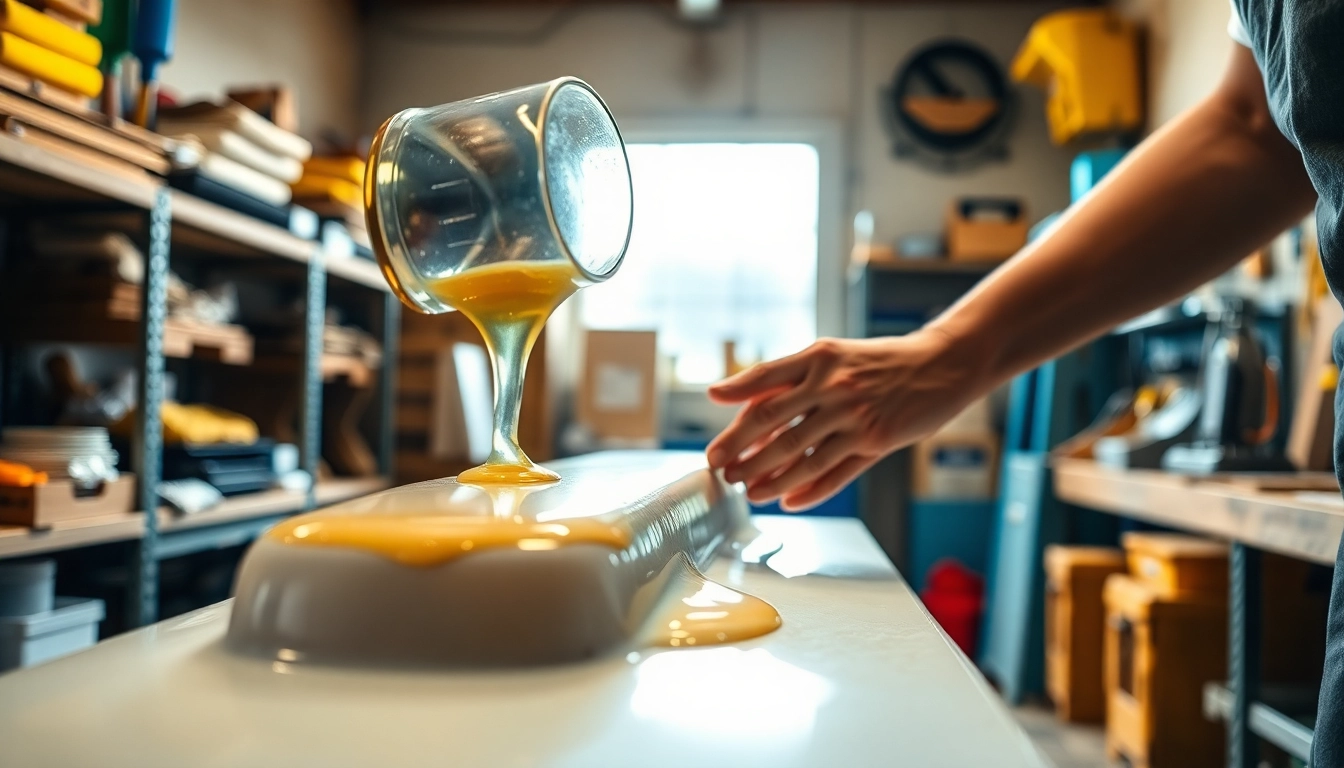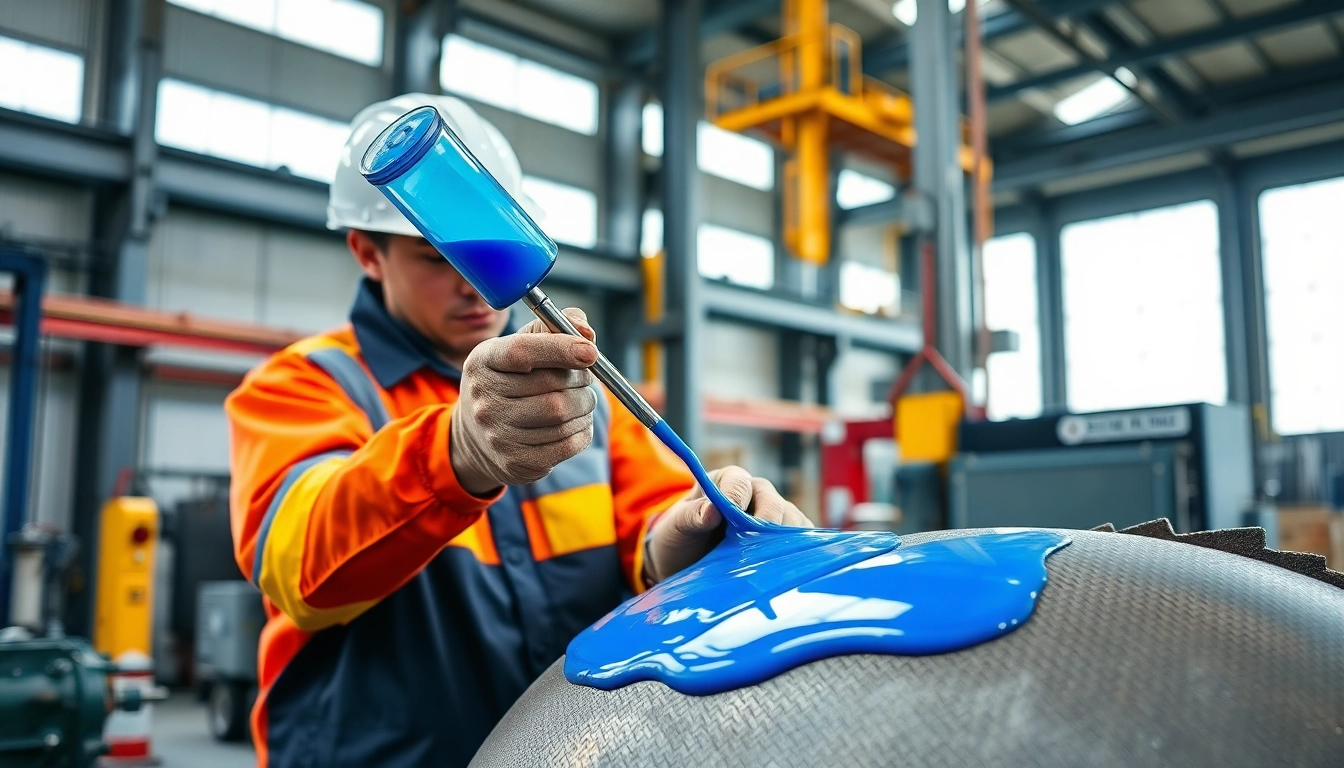Understanding Laminating Resin
What is Laminating Resin?
Laminating resin is a specialized synthetic resin formulated to bond layers of materials together, primarily used in composite applications such as fiberglass and carbon fiber construction. This type of resin is essential when reinforcing structures, as it provides enhanced strength and durability. Laminating resin cures through a chemical reaction, which can be initiated by catalysts, allowing it to set and form a solid matrix that holds fibers in place, ultimately delivering structural integrity.
Different types of laminating resin exist, which cater to various applications, from marine constructions to automotive parts. Among these, polyester and epoxy resins are particularly noteworthy due to their distinct properties suited for diverse challenges in material bonding and reinforcement. Users often rely on laminating resin to achieve a high-quality finish and long-lasting performance in their projects.
Types of Laminating Resin
The two primary types of laminating resin are polyester resin and epoxy resin. Both have unique characteristics that make them suitable for different applications:
- Polyester Resins: Known for their affordability and ease of use, polyester resins are commonly used in boat manufacturing and other marine applications. They cure quickly and provide good dimensional stability but tend to be less durable than epoxy resins.
- Epoxy Resins: This type of resin is often preferred for its superior adhesion, chemical resistance, and flexibility once cured. Though more expensive, epoxy resins are ideal for applications requiring long-lasting strength and resistance to external elements, making them popular in demanding environments like aerospace or automotive sectors.
How Laminating Resin Works
Laminating resin works through a curing process that involves mixing a resin and a hardener (catalyst). This mixture initiates a chemical reaction, transforming the liquid resin into a solid state. The application involves layering the resin between sheets of reinforcing materials like fiberglass, allowing for optimal bonding and thickness. The integrity of the laminate is largely dependent on the quality of the resin used as well as the methods of application.
The wet-out process—where the resin saturates the fabric—is critical for achieving optimal results. Properly saturated materials allow for maximum strength and minimize voids that could compromise durability. Understanding the curing time and process is essential in timing the application of multiple layers, especially in larger projects.
Benefits of Using Laminating Resin
Durability and Strength
One of the most significant advantages of using laminating resin is its durability. Laminated structures exhibit remarkable tensile strength and resistance to environmental factors like moisture, UV light, and temperature fluctuations. This durability is particularly pronounced with epoxy resins, which are designed to withstand severe conditions, making them ideal for demanding applications.
When used appropriately, laminating resin layers can greatly enhance the overall strength of the composite product, extending the life of the materials used and providing greater peace of mind for construction integrity.
Versatility in Applications
Laminating resin is incredibly versatile, suitable for a multitude of applications ranging from recreational boating to automotive parts and even aerospace components. In marine environments, polyester resins are commonly used due to their moisture-resistant properties, while epoxy resins are favored in situations where high-performance materials are essential due to their strong bonding capabilities.
Such versatility extends beyond just the materials being reinforced. Laminating resin can be applied in both small-scale DIY projects and large industrial applications, providing remarkable adaptability across various industries.
Cost-Effectiveness of Laminating Resin
Despite some initial reservations regarding the costs associated with high-quality laminating resins, their long-term benefits often outweigh the upfront investment. With increased durability and lower maintenance needs, using laminating resin can lead to cost savings over time. In industrial applications, the longevity and stability provided by laminating resin contribute to less frequent repairs and replacements, ultimately saving on material and labor costs.
Furthermore, the availability of different grades of laminating resin allows for better financial planning based on project needs—there are options that can fit within budget constraints while still providing effective results.
How to Choose the Right Laminating Resin
Factors to Consider
Choosing the right laminating resin requires consideration of various factors to ensure compatibility with project requirements:
- Application Purpose: First and foremost, determine the intended use of the composite structure. Is it for marine, automotive, or another application? Each sector may require a different type of resin based on the environmental stressors involved.
- Curing Time: The working time before a resin begins to cure can vary significantly. For projects requiring quick turnaround, fast-curing resin options may be preferable, while others may benefit from slower curing resins.
- Cost: Evaluate the budget available for the project. While epoxy resins generally offer higher performance, they also come with a higher price tag compared to polyester resins. Consider both short-term and long-term cost implications.
- Environmental Conditions: The surrounding environment will impact the choice of resin. For instance, if the composite is to be used outdoors, UV stability and moisture resistance may be vital.
Comparing Laminating Resin Types
When selecting between polyester and epoxy laminating resins, it’s essential to weigh the pros and cons of each:
- Polyester Resin:
- Pros: Lower cost, easier to use, faster curing times.
- Cons: Less heat and moisture-resistant, less adhesion strength.
- Epoxy Resin:
- Pros: Superior strength and durability, better chemical resistance, exceptional bonding properties.
- Cons: Higher cost, longer curing times, may require additional surface preparation.
Common Use Cases for Laminating Resin
Laminating resin is employed across various industries. Some common use cases include:
- Marine Applications: Utilized in building durable boat hulls and other watercraft components, where resistance to water is crucial.
- Aerospace Components: Employed in the production of lightweight structures requiring high strength-to-weight ratios.
- Automotive Parts: Used in the manufacturing of composite panels and components that benefit from reduced weight and increased performance.
- Construction: Involvement in structural elements where strength and durability are vital, such as in bridges and buildings.
Application Techniques for Laminating Resin
Preparing the Surface for Laminating Resin
Proper preparation of the surface to which laminating resin will be applied is critical for ensuring effective adhesion and longevity of the bond:
- Cleaning: Remove any dust, grease, and foreign materials from the surfaces. Cleaning agents should be compatible with the resin to avoid contamination.
- Sanding: Sanding the surface helps create a rough profile, enhancing the mechanical bond between layers. Ensure the surface is free of dust after sanding.
- Drying: Allow the surface to dry completely if any cleaning or wet sanding was performed prior to resin application.
Steps for Proper Application
Follow these steps for optimal results when applying laminating resin:
- Prepare the surface as outlined above.
- Mix the laminating resin with the hardener according to manufacturer instructions, ensuring thorough mixing to avoid uneven curing.
- Apply the resin onto the surface generously, ensuring even coverage.
- Layer reinforcing materials like fiberglass or carbon fiber over the wet resin.
- Apply additional resin over the layers, using a brush or roller to saturate the fabric completely.
- Allow the laminate to cure fully according to the recommended settings before trimming or further processing.
Common Mistakes to Avoid When Using Laminating Resin
Avoiding common pitfalls can ensure success in your resin projects:
- Poor Surface Preparation: Skipping steps in surface preparation can lead to inadequate adhesion and potential failure of the bond.
- Incorrect Mixing Ratios: Ensure you follow the recommended mixing ratios. Too much hardener can lead to a brittle laminate, while too little can result in incomplete curing.
- Not Allowing Proper Cure Time: Be patient and allow the resin to cure fully before exposing it to stress or environmental conditions. This can vary depending on the type of resin used.
- Ignoring Safety Procedures: Always prioritize safety by using appropriate personal protective equipment and ensuring proper ventilation during application.
Safety Measures and Best Practices
Protective Gear When Working with Laminating Resin
Working with laminating resin can pose health risks if not handled correctly. Ensure a safe working environment by using the following protective gear:
- Gloves: Use chemical-resistant gloves to prevent skin irritation from resin exposure.
- Respirators: Inhalation of fumes during mixing and application can be harmful. Ensure to wear a qualified respirator for adequate protection.
- Safety Goggles: Protect your eyes from accidental splashes and airborne particles by wearing safety goggles.
- Aprons: Consider using a disposable or chemical-resistant apron to shield clothing and skin from resin splashes.
Storage and Disposal Guidelines
Proper storage and disposal of laminating resin are crucial to ensure safety and environmental protection:
- Storage: Keep resin containers tightly sealed and stored in a cool, dry place away from direct sunlight and heat sources.
- Disposal: Follow local regulations for disposing of unused or expired resin. Never pour resin down drains; hazardous waste disposal methods should be applied.
Maintenance Tips for Resin Projects
To ensure that your projects maintain their integrity over time, consider the following maintenance tips:
- Regular Inspections: Regularly check for signs of wear, damage, or water ingress to address potential issues early.
- Cleaning: Clean surfaces regularly to prevent the accumulation of dirt and grime.
- Touch-Up Repairs: Quickly address any chips or scratches with appropriate resin and reinforcement to prevent further damage.













Leave a Reply